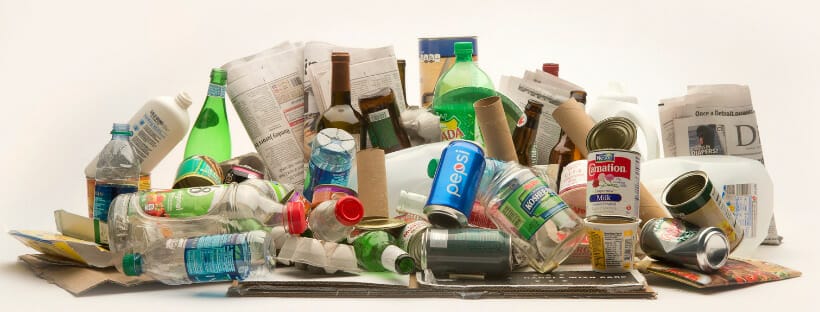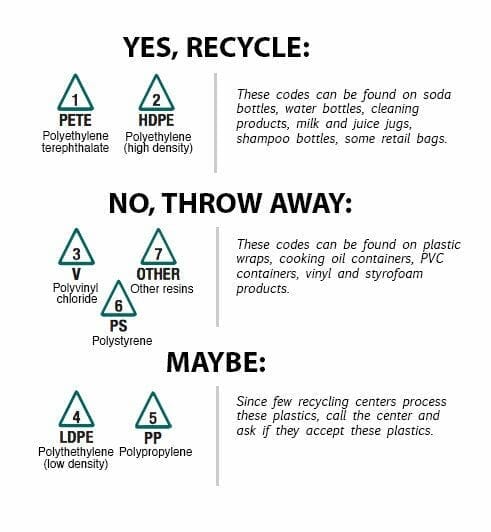
Tossing soda bottles, empty butter containers, takeout containers, paper, and cans into a recycling bin feels like an easy thing you can do to make a difference in the age of over-consumption. Making new stuff takes a lot of energy and recycling uses less energy, so recycling is a better option than the landfill.
Reduce, reuse, recycle has been preached to us since elementary school. We’re taught that these three steps will save the planet. But is recycling BS? Is it even worth it? At this point, we have all heard rumors that the recycling industry has its problems…
If any of these questions have crossed your mind, you aren’t alone. How To Save a Planet, a podcast that discusses all things climate change, takes a closer look at the environmental impact of the recycling processes for metal, glass, paper, and plastic.
Establishing some recycling basics
On the podcast, Kendra Pierre-Louis and Alex Blumberg fill in some recycling knowledge gaps. Kendra Pierre-Louis is an experienced climate reporter and journalist. She currently works for Gimlet Media, where she is a reporter and the producer of How To Save a Planet. Alex Blumberg is an award winning-radio journalist, the co-founder of Gimlet Media, and part of How To Save a Planet.
What is recycling?
Recycling is the process of taking something, breaking it down, and turning it into a new version of what it started as.
Recycling that is picked up on a municipality basis is dealt with by sorting and selling what comes in. Some items that are recycled may be sent to a material recovery facility, or a MRF.
In other countries, people sort their own recycling and local recycling pick-up trucks come around multiple times a week with music to inform you of their arrival.
What is down-cycling?
Down-cycling is the process of pulling materials out of a product to use it again in a new product. Non-recyclable materials are added to remake the product, preventing it from being recycled a second time. So while down-cycling is better than the landfill, it is not a very environmentally-friendly process in the long term.
So enough recycling vocabulary and facts. Let’s look at the breakdown of metal, glass, paper, plastic, and clothing recycling.
What is good to recycle? What is problematic?

Metal
The largest component of recycled metals? Aluminum. More specifically aluminum cans. The beauty of this? Aluminum cans can be recycled and remade forever. Recycled aluminum usage has a 95% smaller carbon footprint than that of all “virgin metal” or brand new metals. Any other metals you recycle can essentially be melted down and remade into other metal products.
Recycling aluminum cans and other metals (not electronics) is good for the environment!
Glass
Again, glass can be recycled forever, as it can be melted down and reshaped over and over again. Glass with coating, like windshields, isn’t as recyclable–but most drink bottles you can think of, from beer to kombucha, are forever recyclable. Recycling glass is well worth it: making virgin glass takes a lot of energy and the resources are becoming scarce.
Recycling glass is good for the climate!
Paper
Using more recycled paper means cutting down less trees. But unlike other materials, paper cannot be recycled forever. The process of using chemicals to remove inks and dyes weakens the fibers, limiting the recycling process to 5-7 times for paper. Paper has a high rate of recycling in the United States: In 2020, 65% of paper used was recycled!
Recycling paper makes a difference!
Plastic
A 2015 study found that we produced 300 million tons of plastic waste a year. Plastic has been found everywhere–from the top of Mt. Everest to the deep oceans and everywhere in between.
Metal, glass, and paper recycling is pretty closed-loop, meaning everything is melted down and creates the same thing with little additives necessary. Recycled plastic is not the same–think single-use plastic water bottles, an example of PET plastic. It is harder to melt correctly, and gets weaker with each melt, meaning it needs lots of additives. This kind of plastic often gets used for down-cycling for products like jackets and carpets. This cuts the recycling life cycle pretty short.
This is not the only type of plastic. Plastic is split into soft, rigid, and in-between with different recycling abilities. Cities have different rules for what can be recycled and what cannot.
But that recycling symbol with the number on every plastic container and bottle? Don’t let it fool you—it does not mean that item is recyclable. These symbols are part of the Resin Identification Code system that the plastic industry lobbied state governments to adopt, even though it is misleading.
A soft plastic that has proved to be problematic is film plastic. This is soft plastic including packaging, saran wrap, takeout containers. Putting these things in the recycling creates stuck machines or selling that essentially implements a tax on the plastic to end up in the landfill. It is actually better to just put this plastic into the trash.
But make sure that plastic actually gets into the trash… Single-use plastics taught people to just toss stuff out, leading to a huge litter problem that led to educational campaigns in the ‘70s to teach the importance of throwing things away the right way.
It is important to look at city ordinances for which types of trash can be recycled. Recycle the plastics you can, but remember that consuming less is always the best option to make a difference.

Plastic is complicated… here’s what you can do:
- The best thing to do with plastic is use less of it!
- Want to live a more plastic-free life but don’t know where to start? Here are 100 steps!
- Check your local city ordinances for what plastic symbols you can recycle!
- Throw away plastics that cannot be recycled!
Clothing
Recycling clothing is a bit complicated because “recycling” may not be the best option. Reducing clothing waste starts with buying less, wearing what we have, and then when cleaning out things we can’t or no longer want to wear, making the best choices.
Luckily there are many good options for used clothes including selling, swapping, donating, repairing, repurposing and recycling.
It is important to remember that recycling clothing still poses difficulties. Like paper, clothing must be chemical-treated to remove dye which weakens the fibers. Similar to plastic, the clothing recycling process is rarely closed-loop and usually ends in a landfill.
Remember that reducing how much you buy is the best option to eliminate down-cycling and the landfill. Otherwise check our guide for good options.
Takeaways:
Overall recycling is great so keep doing a good thing! However, not every material is created equal. Most materials are good to recycle, and plastic… well, it’s complicated.
The over-usage of plastic is systematic. Businesses are encouraged to follow a “whatever is cheapest” business model that fails to consider environmental impact and the climate crisis. Consumption guilt is real, but reducing our usage on a personal level and asking companies to consider environmental impact are important ways to change the industry.
Keep up the metal, glass, and paper recycling! The closed-loop process majorly reduces greenhouse gas emissions in the ‘making’ process. This is huge! Look into city recycling guidelines for plastics, and for clothing check out our guide to find what works for you.
Quick Reference Guide:
- Metal = Great
- Glass = Great
- Paper = Good
- Plastic = The best thing you can do is use less!
- Clothes = Use less. Then use our guide.
Bonus Content
Looking for more? We highly recommend checking out this podcast episode:

Emma is a writer at Eco-Stylist. She studies journalism and mass communications at the University of Iowa. Emma’s love for sustainable fashion was sparked by thrifting with her mom throughout her childhood.









